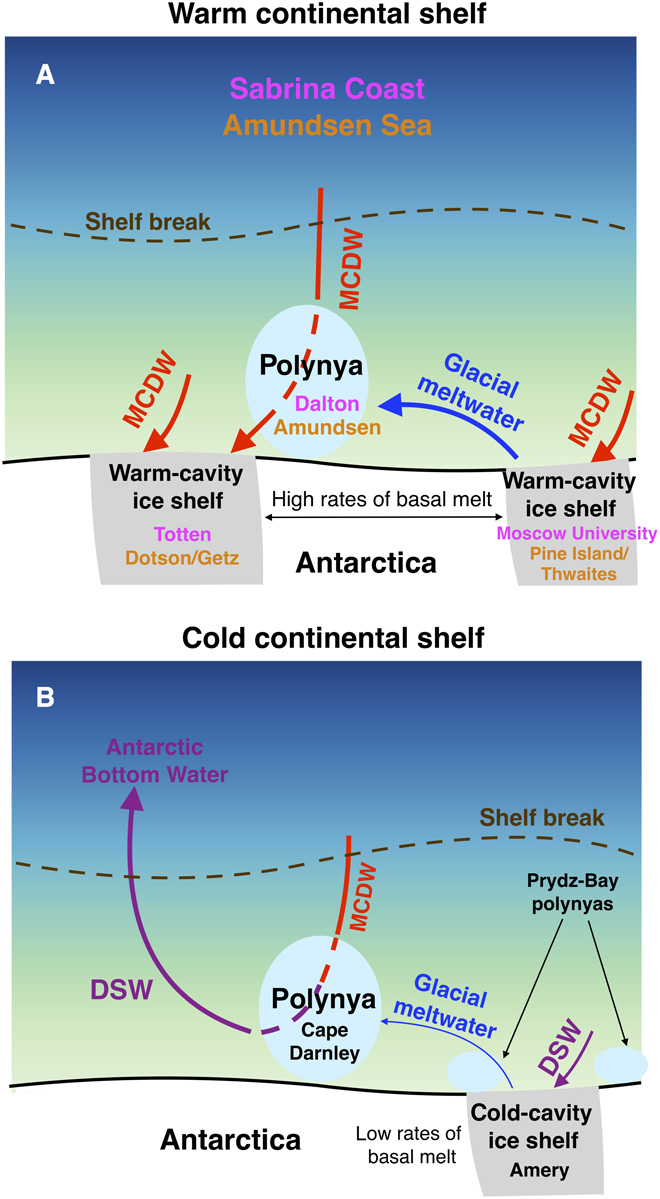Global warming is melting Antarctic ice from below
The results from a study published in Science Advances, and reported in a recent Guardian article, suggest that increased glacial meltwater input in a warming climate will both reduce Antarctic Bottom Water formation and trigger increased mass loss from the Antarctic Ice Sheet, with consequences for the global overturning circulation and sea-level rise.
CSHOR is one of several organisations supporting the research and is duly acknowledged by the authors of the paper.
The figure below is an extract from the Science Advances paper.
 Figure: Impact of glacial meltwater on dense water formation and shelf stratification.
Figure: Impact of glacial meltwater on dense water formation and shelf stratification.
On warm continental shelves, as those on the Sabrina Coast and in the Amundsen Sea (A), MCDW drives rapid ice shelf basal melt. The large volume of glacial meltwater prevents DSW formation in polynyas downstream of the meltwater outflow. MCDW remains in the bottom layer throughout the year in the polynya and further downstream, where it can access the ice shelf cavities. On cold continental shelves, the ice shelf cavities are filled by cold shelf waters, and basal melt rates are low. Glacial meltwater input is not sufficient to suppress winter convection in polynyas downstream of the meltwater outflow, as seen at Cape Darnley Polynya (B), allowing formation of DSW, the precursor to Antarctic Bottom Water.